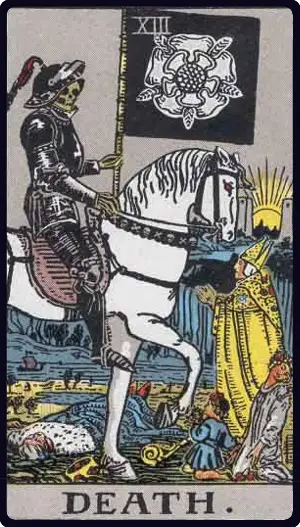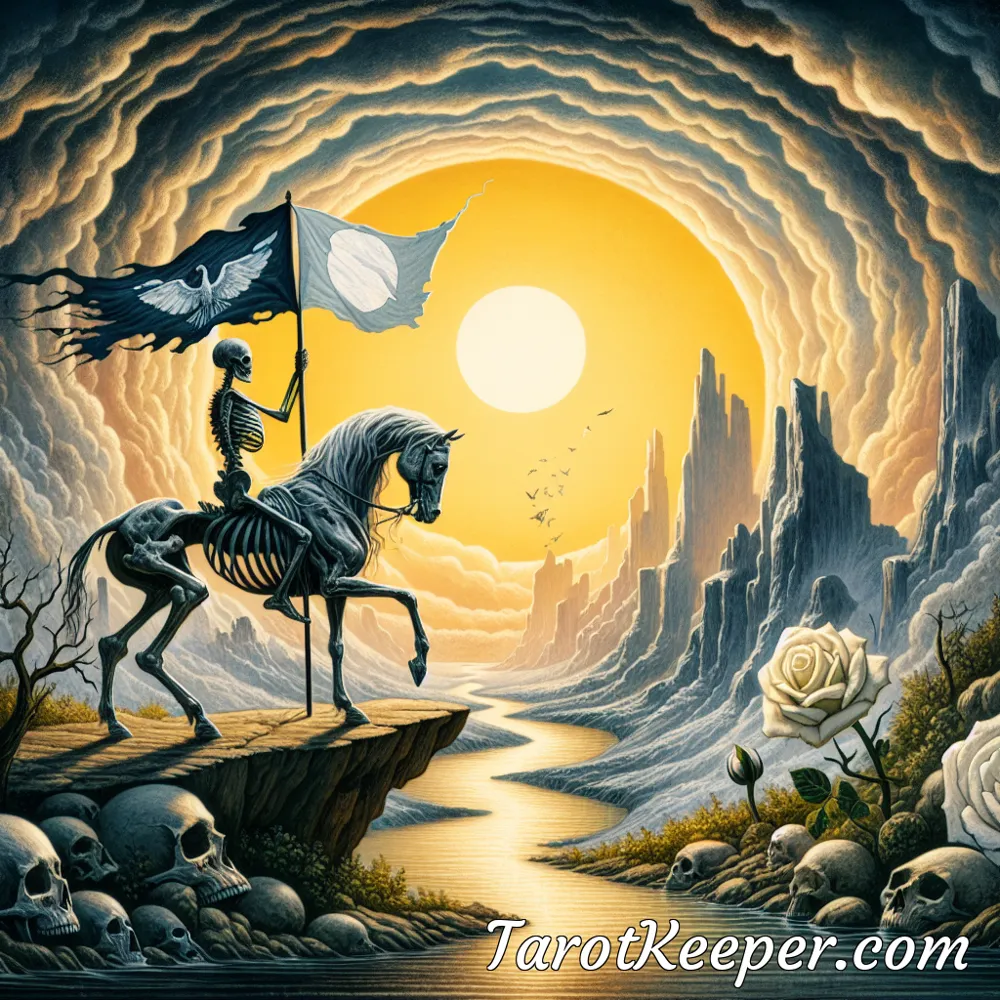


The Death card in Tarot often sends shivers down the spine of those unfamiliar with its true meaning. It is a card that is commonly misunderstood, feared, and associated with negative connotations. However, this powerful archetype has a deeper message to convey, one that transcends the literal interpretation of physical death. In this article, we will explore the Death card as a message in the Tarot, delving into its symbolism, significance, and the transformative power it holds.

At first glance, the Death card may seem ominous, depicting a skeletal figure on horseback, often carrying a flag adorned with a white rose. However, its symbolism goes beyond the superficial. The skeletal figure represents the inevitability of change and the natural cycle of life and death. The white rose symbolizes purity, rebirth, and new beginnings amidst the transition. The sun setting in the background signifies the end of a cycle and the promise of a new dawn. The river flowing in the foreground represents the flow of life and the continuity of existence. When the Death card appears in a reading, it heralds the end of one phase and the beginning of another, urging the seeker to embrace transformation and renewal.
Death, in the Tarot, is not to be feared but embraced as a catalyst for growth and evolution. It signifies the shedding of old patterns, beliefs, and circumstances that no longer serve a purpose. When the Death card appears, it urges the seeker to release attachments to the past, to let go of what no longer serves their highest good, and to welcome change with open arms. It is a call to surrender to the natural ebb and flow of life, to trust in the process of transformation, and to embrace the inherent wisdom and resilience that lies within each individual.
Just as the seasons change and the cycles of nature continue, the Death card heralds the promise of rebirth and renewal. It invites the seeker to embrace the opportunity for a fresh start, to plant the seeds of new intentions, and to embark on a journey of self-discovery and personal transformation. When one door closes, another opens, and the Death card serves as a gentle reminder that endings are not to be feared but celebrated as gateways to new beginnings. It encourages the seeker to trust in the process of regeneration, to have faith in their own resilience, and to welcome the transformative energy that accompanies change.
The Death card also serves as a poignant reminder of the impermanence of life. It encourages the seeker to live fully in the present moment, to cherish the beauty of fleeting experiences, and to acknowledge the transient nature of all things. By embracing the concept of impermanence, one can release the grip of fear and uncertainty, finding solace in the understanding that change is a natural and essential part of the human experience. The Death card invites the seeker to cultivate a sense of acceptance and equanimity in the face of life's inevitable transitions, fostering a deeper appreciation for the richness of each passing moment.
In conclusion, the Death card in the Tarot serves as a powerful messenger of transformation, rebirth, and the cyclical nature of existence. It urges the seeker to embrace change, release attachments to the past, and welcome new beginnings with an open heart. By understanding the deeper symbolism and significance of the Death card, one can navigate life's transitions with grace, resilience, and a profound sense of renewal. It is a reminder that within every ending lies the seed of a new beginning, and that through embracing the transformative power of change, one can truly experience the fullness of life.
Have questions or need guidance? Reach out to us anytime at [email protected]
We're here to help you on your tarot journey.
© Copyright 2024 by TarotKeeper.com. All rights Reserved.